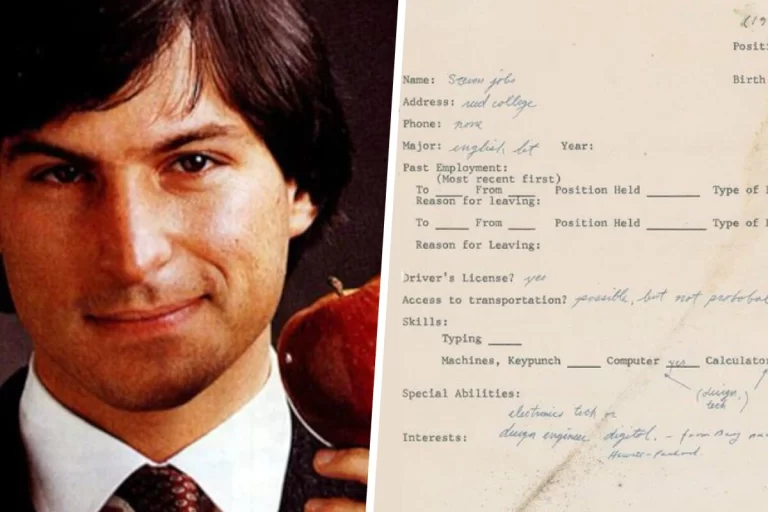Steve Jobs and Bill Gates are widely recognized as visionaries who changed the world through their innovative companies, Apple and Microsoft. However, before their monumental successes, they were once young students with little experience, tasked with creating their first resumes. Although AI has made resume creation much easier today, the 1970s presented a different challenge.
Steve Jobs’ First Resume
Before his famous garage startup and the creation of the Apple 1, Steve Jobs also tried his luck at other companies, including Atari and Pixar. But at the young age of 18, he filled out his first resume with the limited information he could provide.
As revealed in an X post, Jobs’ resume appears simple, showcasing his neat handwriting and details that already demonstrated his passion for engineering and design. Known for his unorthodox approach, this was evident in his resume. The work experience section was incomplete, and he did not provide a phone number.
The most striking part of the resume is the “Special Abilities” section, where he mentioned his knowledge of computers and calculators, along with his interests in “electronic tech or design engineer.” This revelation anticipates the key role he would play in designing products like the Apple I, revolutionizing personal computers with a focus on simplicity and aesthetics. This would later extend to the launch of the first Macintosh, iPod, iPhone, and more.

Although Jobs did not complete his formal education, Reed College was a place where he began to explore his creativity. It’s the address he listed on his resume. There, he developed his interest in calligraphy and design – an obsession that would later be reflected in the typography of Apple products.
The Contrast with Bill Gates’ Resume
The same X post compares the resumes of Steve Jobs and Bill Gates. Although both were 18 years old, the differences are striking. While Jobs’ resume is more ambiguous and focused on general interests, Gates’ resume already showcased an impressive list of technical skills.
The fact that Gates’ resume is typed suggests an attention to detail and a more formal approach than the young Jobs. Gates’ resume conveys a more corporate and methodical image from the outset, reflecting the way he would eventually lead Microsoft.

The resume includes his address, phone number, and other details at the top. His experience and skills are clearly detailed, providing very specific information about the technologies he mastered. From programming languages (FORTRAN, COBOL, BASIC) to the systems he had worked on (PDP-10, PDP-8, CDC-6400), Gates leaves no loose ends and demonstrates an impressive technical mastery for his age. Another striking aspect is the request for a desired salary of $35,000, a considerable amount for a young student in the 1970s.
Lessons for Today’s Job Seekers
If you’re looking to improve your resume, you can also draw inspiration from the examples of these two geniuses. Showcasing your skills is key, especially if you have a great passion. Steve Jobs and Bill Gates, with their vastly different styles, teach us that there is no single formula for success. The important thing is that your resume reflects who you are and where you want to go. Leveraging current technologies to make it clearer and more visual can make a difference, but authenticity and passion will always be the key elements that any employer will look for.


0 Comments